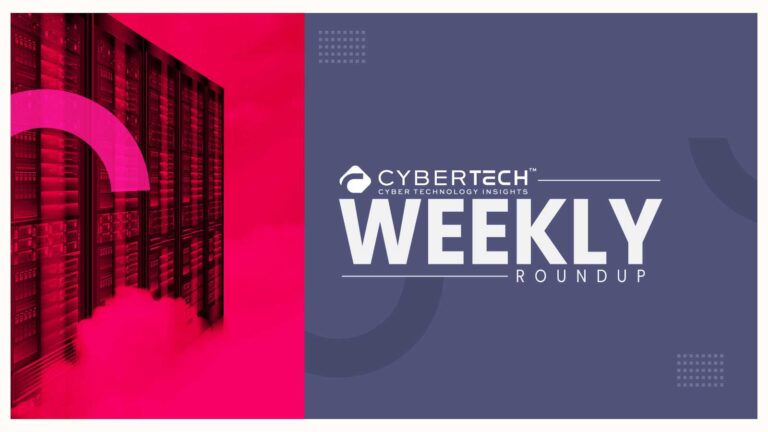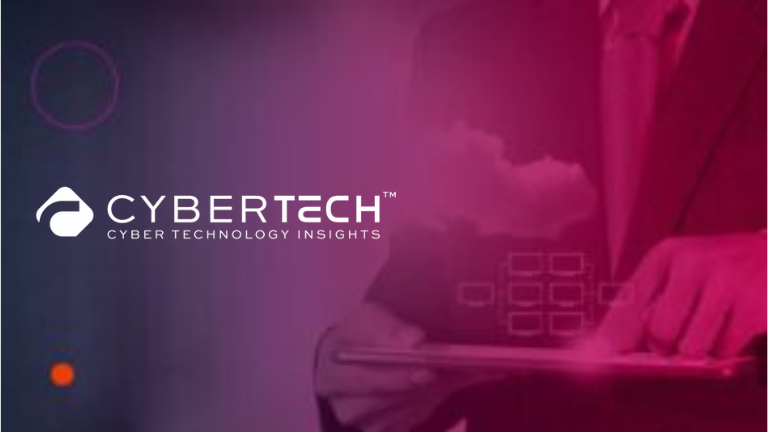As artificial intelligence moves from solo automation to dynamic autonomous decision-making, orchestrating AI agents is a top cybersecurity imperative for today’s enterprise security leaders. For Chief Information Security Officers (CISOs), the task is more than deploying intelligent algorithms; it encompasses a solid, security-minded framework for governing how multiple AI agents communicate, learn, and respond in an entire digital ecosystem.
Teleperformance’s TP.ai FAB platform represents a paradigm leap in orchestrating AI agents with inherent security and governance. Its design architectures elevate high-end automation with operational resiliency, allowing organizations to gain optimal value from agentic AI while maintaining threat exposure and regulatory risks tightly in check.
Defining Orchestrating AI Agents in Modern Enterprises
AI agents are free-standing software entities that can make decisions based on context, respond and adapt in real time, and learn from streams of real-time data without continuous human intervention. In contrast to conventional static automation scripts, the agents interactively engage with virtual worlds, customer information, and other computer systems.
Orchestrating AI Agents involves synchronization of their interactions, monitoring decision paths, and also applying consistent security and compliance policies over the entire lifecycle of agents. Without orchestration, multiple AI agents result in siloed operations and eventually bring new attack surfaces that the attacker can leverage.
Elegant AI Agent Ecosystem. Also, A well-architected AI agent ecosystem places these agents within a shared governance layer. The platform imposes identity controls, real-time monitoring, open auditing, and frictionless interaction, avoiding inefficiencies and closing security gaps.
TP.ai FAB: Foundation for Secure Orchestrating AI Agent Orchestrating
TP.ai FAB Teleperformance’s Fabric for Autonomous Bots provides an enterprise-level solution to the management of AI agents at scale. So, in highly regulated industries like finance and critical infrastructure, FAB is deployed as a secure control plane that coordinates, controls, and monitors multiple AI agents in mission-critical workflows.
Key security features built into TP.ai FAB are:
Unified Coordination:
TP.ai FAB integrates disparate AI agents into one cohesive fabric. Agents exchange context and yield tasks gracefully, creating agility and eliminating duplicate processes. So, This architecture eliminates isolated silos that can be blind spots for attackers.
Security by Design
Strict identity verification, role-based access control, and also, ongoing behavior monitoring govern every AI agent in FAB. The system blocks unauthorized actions instantly and flags suspicious behavior automatically, reinforcing zero trust.
Governance and Auditability:
End-to-end audit of transactions, Explainable AI components, and tamper-proof records give unambiguous visibility. So, Traceability meets regulations like GDPR and CCPA, minimizing legal exposure without inhibiting operational flexibility.
Elastic Scaling with Ongoing Protection:
TP.ai FAB scales the workloads of AI agents dynamically up or down by operational needs. This elasticity goes hand-in-hand with ongoing security monitoring, so extra capacity never compromises the defense posture under high loads.
Seamless Integration
FAB exists alongside current cloud infrastructure, identity providers, SIEM solutions, and security platforms. Organizations embrace automating AI agents without costly re-architecture, expediting ROI, and strengthening the security stack in general.
Security Challenges in Orchestrating AI Agents
Scaling orchestrated AI agents alters the scalability and efficiency of web operations, but at the same time brings with it a complex set of security issues that must be dealt with tremendous accuracy. These issues extend way beyond the type of threats IT faces because each autonomous agent makes decisions and acts with some agency and autonomy.
Expanded Attack Surface:
When AI agents work together, they create more points for attackers to exploit. Each agent connects with internal APIs, external data, cloud apps, and sometimes customer systems. Without secure orchestration, vulnerable agents form lateral movement pivot points, privilege escalation, or data exfiltration throughout the infrastructure.
Sensitive Data Exposure:
Agents manage highly sensitive data sets such as customer PII, transactional history, behavioral data, and control operations. Insecure encryption, poorly managed data transit, or access permission misconfiguration can result in unauthorized disclosures and large regulatory penalties. Data integrity also needs to be safeguarded since compromised or poisoned inputs can propagate incorrect actions throughout coupled agents.
Adversarial Manipulation
Cyber attackers increasingly focus on the decision logic or machine learning model governing autonomous agents. Methods such as input perturbation, data injection, and model poisoning can potentially manipulate agent behavior such that it allows unwanted action by the attacker, ranging from avoiding fraud detection to injecting hidden vulnerabilities in threat detection agents themselves.
Regulatory Compliance Pressure
Laws like the EU AI Act, GDPR, and financial rules demand clear, explainable AI processes. Basically, Organizations must document how agents make decisions and ensure compliance at every step. Orchestrated agents are required to keep a record of all decisions, establish an auditable trail, and enable privacy-by-design methods. Disobedience can not only cost fines but also customer trust loss and the threat of suspending AI deployments.
Inter-Agent Trust and Coordination Risks
With highly distributed orchestration, it is required that agents cooperate and exchange information without conflicts. Poorly designed orchestration will cause conflicts in rules, trigger decision loops, or allow an ill-behaved agent to deceive other agents, causing cascading errors or security blind spots that traditional security tools are not even able to monitor.
Proven Best Practices for Securely Orchestrating AI Agents
Advanced organizations use multi-layered security controls to make orchestrated AI agents secure, compliant, and immune to sophisticated threats. You cannot bolt on security afterwards.; it must be baked into the orchestration stack.
Enforce Zero-Trust Architecture:
All agent-to-agent communication, including API calls and data exchange, should conform to zero-trust principles. This includes ongoing authentication and rigorous enforcement of least privilege. Identity and access management (IAM) policy has to be enforced against agents in the same way as against human users, with adaptive authentication for high-risk transactions.
Use End-to-End Encryption and Secure Channels
Information being processed by agents that are in transit or at rest needs to employ secure encryption methods (e.g., TLS 1.3, AES-256). Communication channels between agents need to be secured against eavesdropping and integrity verification to guarantee data received is not tampered with.
Deploy Continuous Anomaly Detection and Behavioral Analytics
Legacy SIEM rules are not enough for coordinated AI agents. Sophisticated behavior analytics and machine learning-based threat detection can baseline normal expected agent activity and label anomalies in real time, catching insider threats, unauthorized actions, or compromised agents operating out of policy.
Enforce Model Explainability and Policy Alignment
Each reasoning process of any AI agent should be understandable to security auditors and business owners. Explainable AI (XAI) frameworks render decision-making transparent so that quick verification against rules of compliance and ethical guidelines is possible. Governance policies with plain language must limit each agent’s operating parameters.
Conduct Periodic Security Audits and Threat Tests
Periodic penetration testing should be expanded from typical IT infrastructure to encompass the orchestration layer, inter-agent communication, and security of underlying ML models. Simulated red-team exercises ensure how agents behave in response to coordinated attacks or compromised inputs.
Select Security-First Orchestrating AI Platforms
Deploy orchestration offerings such as TP.ai FAB that inherently integrate security and compliance. FAB features identity controls, real-time visibility, immutable logging, and elastic scaling with real-time security. This architecture significantly decreases the overhead of tediously retrofitting discrete tools to uphold governance.
Create Incident Response Playbooks for AI Incidents
Security teams need to create AI-specific incident response processes, including agent rollback, forensic analysis of agent choices, and separation of suspect agents from the fabric without impacting legitimate workflows.
Real-World Impact of Orchestrating AI Agents
Industry figures drive the urgency. Gartner’s 2024 governance report validates that inefficient orchestration of AI agents leads to operational breakdowns and regulatory penalties in more than 60% of the world’s enterprises. Forrester predicts orchestrated AI agents will be a leading threat actor target in 24 months.
Early adopters such as high-risk financial institutions and critical infrastructure operators have emerged to protect TP.ai FAB to secure AI-powered Security Operations Centers (SOCs). Such deployments show accelerated threat detection without sacrificing auditability or control.
CISO surveys from around the world reveal a consistent result. That is, secure orchestration platforms turn AI agents into dependable digital workforce extensions that respond to threats and adjust to change without it being a compliance compromise.
Securing the Orchestrating AI of the Future
As independent AI shapes digital transformation, AI agent orchestration is a tough cybersecurity requirement. TP.ai FAB and similar platforms provide the governance, audit trails, and threat detection in real-time that CISOs require in order to deploy AI at scale securely.
Security chiefs need to act fast to implement orchestration controls, grow team expertise to handle AI activity, and align AI deployment strategies with changing regulatory landscapes. Responsible orchestration of AI agents will enable businesses to innovate securely and compete boldly in an AI-first economy.
FAQS:
Q1: What is TP.ai FAB, and how does it complement orchestrating AI agents?
TP.ai FAB is a scalable, enterprise-class solution for orchestrating secure autonomous AI agents at scale. TP.ai FAB integrates identity management, real-time monitoring, auditing for compliance, and elastic scaling in such a way that AI agent orchestration is always efficient, compliant, and secure.
Q2: How can CISOs minimize security risks while orchestrating AI agents?
CISOs should implement a zero-trust framework for all agent interactions, constantly monitor behavior, adopt explainable AI that allows for transparent decisions, conduct regular security audits specific to orchestration, and utilize secure-by-design orchestration platforms such as TP.ai FAB.
Q3: How is agentic AI different from existing AI systems?
Agentic AI can autonomously make context-dependent decisions, dynamically learn, and modify behavior in real time without human scripting. Conventional AI executes pre-programmed, scripted functions without self-altering.
Q4: How does TP.ai FAB safeguard data privacy and guarantee compliance with regulations?
TP.ai FAB has end-to-end encryption, secure access controls, strong logging, and transparent policy enforcement. This protects personal data processed by AI agents and ensures the integration of AI agents complies with worldwide privacy regulations such as GDPR and CCPA.
Q5: What are the biggest challenges in coordinating multiple AI agents at the same time?
Agent workflow coordination, secure data flows among agents, regulation compliance management, detection of anomalous behavior, and dynamic scaling of agent operation without compromising security are the fundamental orchestration challenges. Secure orchestration frameworks address all these areas comprehensively.
CyberTechnology Insights will continue to examine Orchestrating AI and present strategies that place enterprise security on the high ground amid an age dominated by autonomous intelligence. To participate in upcoming interviews, please reach out to our CyberTech Media Room at sudipto@intentamplify.com.







